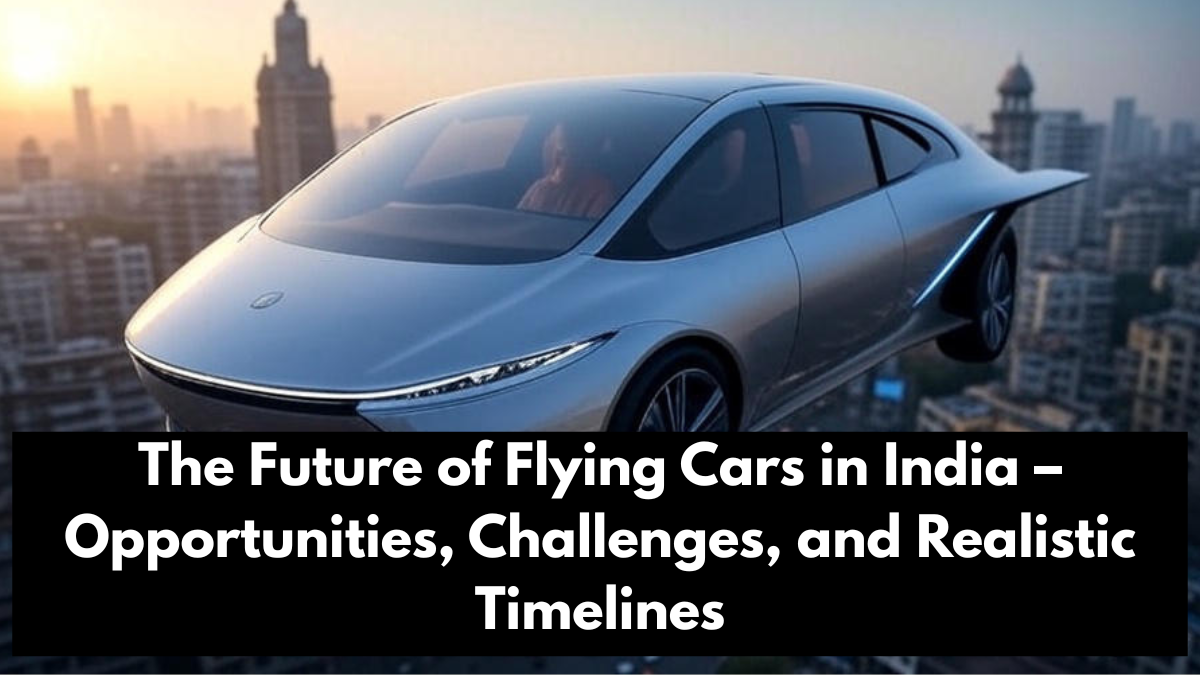The concept of Flying Cars in India is no longer confined to science fiction. With rapid urbanization, overcrowded roads, and a strong push for innovation, India is looking at flying vehicles as the next step in Future Transportation. While the vision of flying cars sounds futuristic and thrilling, the journey from prototypes to everyday reality involves both opportunities and challenges. The Indian market, with its unique social, economic, and infrastructural needs, provides a fascinating case for analyzing how flying cars might become a part of our lives.

Opportunities for Flying Cars in India
Flying cars could be a revolutionary answer to India’s growing traffic problems. Cities like Delhi, Mumbai, and Bengaluru are struggling with congestion, and flying vehicles could reduce travel time drastically. Apart from convenience, they also bring strategic advantages such as rapid medical transportation, faster logistics, and new business opportunities.
Key opportunities include:
- Drastically cutting down urban travel time
- Creating new segments in the Future Transportation market
- Supporting emergency services like air ambulances
- Opening up avenues for tourism and luxury mobility
- Reducing pressure on overburdened road infrastructure
With government initiatives promoting electric mobility, India is already moving towards clean energy vehicles. Flying cars, if designed sustainably, could align well with these efforts.
Challenges in Implementing Flying Cars in India
Despite the potential, there are significant challenges. The infrastructure required for Flying Cars in India is complex and costly. Urban planning would need skyports, take-off and landing zones, and advanced air traffic management systems. Another hurdle is safety and regulation—air travel is far stricter than road transport, and ensuring safe skies for millions of users is a monumental task.
Challenges include:
- High development and operational costs
- Safety, licensing, and regulatory frameworks
- Lack of existing infrastructure like skyports
- Public acceptance and affordability issues
- Environmental concerns regarding emissions and noise
These obstacles make it clear that while Future Transportation with flying cars is promising, it cannot happen overnight.
Realistic Timelines for Flying Cars in India
Experts believe that flying cars will not become mainstream in India immediately. Instead, their rollout will happen in phases. Initially, flying taxis may be introduced in controlled routes for urban mobility. This will be followed by gradual integration into larger networks as infrastructure and technology mature.
Below is a table showing a potential timeline for Flying Cars in India:
| Timeline | Development Stage | Expected Outcome |
|---|---|---|
| 2025 – 2030 | Pilot projects & prototypes | Limited flying taxi services in metros |
| 2030 – 2040 | Infrastructure expansion & regulation development | Wider adoption in tier-1 cities |
| 2040 – 2050 | Mass production & affordability | Broader use for personal and commercial use |
This phased approach ensures safety, affordability, and adaptability in Indian conditions.
The Role of Government and Industry
The government’s role will be crucial in shaping this transformation. Policies around air safety, electric propulsion, and smart city development will directly influence the pace of adoption. Private companies, startups, and global aviation leaders will also need to collaborate in research, testing, and creating viable business models.
The synergy between public and private sectors can make Flying Cars in India a defining part of Future Transportation. If supported with the right investments and policies, India could position itself as a global leader in flying mobility.
Conclusion
The dream of Flying Cars in India is both exciting and challenging. While the opportunities for transforming Future Transportation are immense, issues of infrastructure, cost, and safety cannot be ignored. India must balance innovation with practicality, focusing on phased development rather than rushing into mass adoption. If executed strategically, flying cars may not just solve traffic problems but also redefine how Indians move, work, and live in the decades ahead.
FAQs
When will Flying Cars in India become a reality?
Flying cars are expected to enter India in a phased manner, starting with limited pilot projects between 2025 and 2030.
What are the major challenges in adopting Flying Cars in India?
The biggest challenges include high costs, safety regulations, lack of infrastructure, and public acceptance.
How can Flying Cars in India help with Future Transportation?
They can reduce urban congestion, provide faster emergency transport, and open new business opportunities in mobility.
Will Flying Cars in India be affordable for common people?
In the beginning, flying cars will likely be limited to premium services. Mass affordability may come after 2040 as technology advances.
What role will the government play in the future of Flying Cars in India?
The government will play a key role in building infrastructure, creating regulations, and supporting clean energy adoption for flying cars.
Click here to know more.